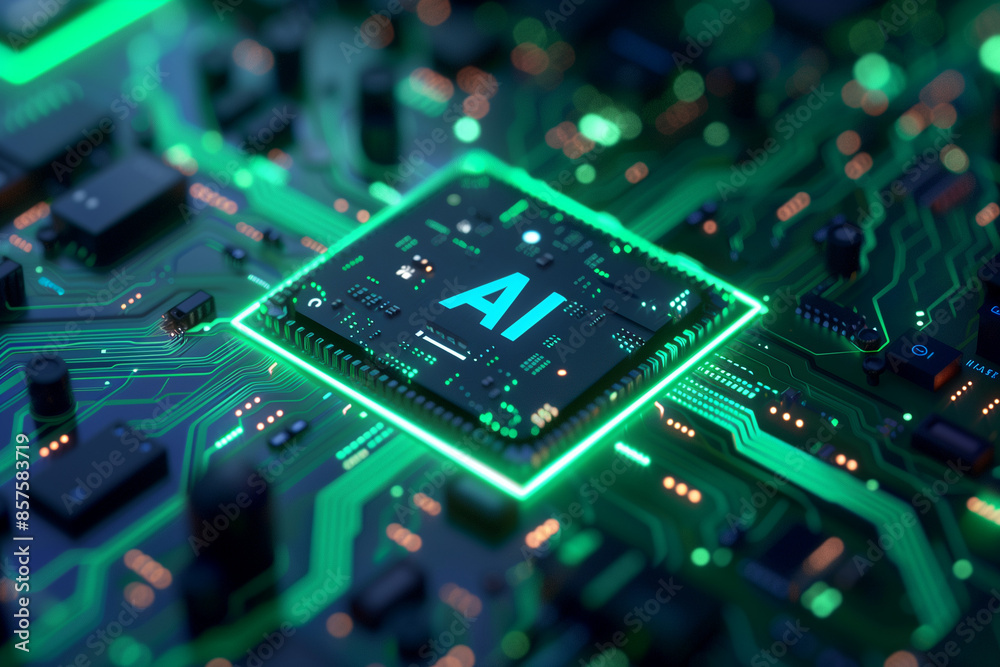The artificial intelligence (AI) revolution is sweeping across industries, promising unprecedented innovation and efficiency. However, this transformative technology comes with a rapidly escalating hidden cost: an insatiable appetite for electricity. As AI models grow more complex and their deployment expands, the associated energy demands are placing significant, unforeseen pressure on existing infrastructure, notably the US power grid. This surge in AI energy demand poses a critical challenge, pushing an already vulnerable grid towards its breaking point and necessitating urgent action to ensure energy reliability and sustainability.
The Unprecedented Rise of AI Energy Consumption
AI’s incredible capabilities, from sophisticated large language models to complex data analysis, rely on massive computational power. This power, in turn, translates directly into massive electricity consumption. Training a single, advanced AI model can consume as much energy as several homes for a year, and the continuous inference (running) of these models in data centers adds to the escalating demand.
Data Centers: The New Energy Behemoths
At the heart of AI’s energy footprint are data centers – sprawling facilities filled with servers, cooling systems, and networking equipment. These centers are the engines of the digital economy, and their energy consumption is skyrocketing due to AI. A modern AI data center can consume anywhere from 100 megawatts (MW) to over 500 MW, rivaling the energy needs of small cities. For context, 1 MW can power roughly 400-900 homes, depending on consumption patterns.
Industry experts project that by 2030, data centers could account for up to 10% of global electricity demand. The sheer density of high-performance computing (HPC) chips, like NVIDIA’s GPUs, packed into these facilities requires immense electricity for processing and, crucially, for cooling. Without adequate cooling, these powerful chips would overheat and fail, making the cooling infrastructure itself a major energy sink. This rapid expansion directly contributes to the AI’s strain on the US power grid.
AI’s Strain on the US Power Grid: A Growing Concern
The escalating electricity demand from AI is not a future problem; it’s a present reality. Utility companies across the United States are reporting unprecedented load growth projections, largely driven by new data center developments. For decades, electricity demand growth was relatively flat, but now, projections are being revised upwards dramatically. This sudden and steep increase in industrial-scale electricity consumption creates immense stress on transmission lines, distribution networks, and the existing power generation fleet. Meeting this demand requires not just more power, but a more resilient and responsive grid.
Current State of the US Power Grid: Fragile and Aging
The US power grid is a marvel of engineering, but it’s also a complex, aging system built largely in the mid-20th century. It faces numerous challenges independent of AI, including:
- Aging Infrastructure: Many components, from transformers to transmission lines, are decades old and require significant investment for maintenance and upgrades.
- Extreme Weather Events: Climate change is bringing more frequent and intense storms, heatwaves, and cold snaps, which increasingly test the grid’s resilience and lead to widespread outages.
- Demand Fluctuations: Managing the ebb and flow of electricity demand, especially during peak hours, is a constant challenge.
AI’s growing energy needs exacerbate these existing vulnerabilities. The concentrated load from new data centers can quickly overwhelm local grids, leading to bottlenecks and requiring costly upgrades. Without proactive planning and investment, the relentless march of AI energy demand risks significant disruptions to energy supply, potentially leading to brownouts or even blackouts in affected regions.
Regional Hotspots and Grid Vulnerabilities
Certain regions in the U.S. are becoming hotspots for AI-driven data center development due to factors like available land, fiber optic connectivity, and competitive energy prices. Areas like Northern Virginia, parts of the Pacific Northwest, and increasingly, the Midwest, are experiencing this surge. Utility providers in these areas are scrambling to keep up. The concentrated demand in specific locales creates “load pockets,” where the existing transmission and distribution infrastructure struggles to deliver the required power, highlighting the urgent need for grid modernization and expansion to handle the escalating AI’s impact on the US power grid.
Implications of Increased AI Demand on Energy Supply
The core challenge is simple: if AI energy demand outstrips the available generation and transmission capacity, the consequences can be severe. These include:
- Increased Risk of Blackouts and Brownouts: Insufficient supply leads to grid instability and potential power outages, impacting homes, businesses, and essential services.
- Energy Price Hikes: Scarcity of power or the need to bring more expensive “peaker” plants online can drive up electricity costs for all consumers.
- Environmental Concerns: Meeting new demand often relies on expanding fossil fuel-based generation, hindering decarbonization efforts.
The Push for New Power Generation
To meet the projected load growth, there’s a renewed focus on building new power generation capacity. While renewables are preferred, the speed and scale of AI demand mean that natural gas plants are often the quickest and most reliable option to bring online. However, constructing any new power plant, regardless of fuel source, is a lengthy process involving complex permitting, significant capital investment, and often, local opposition. This timeline mismatch further complicates the ability to address AI’s surging appetite.
Renewable Energy’s Role and Challenges
Ideally, AI’s massive energy footprint could be powered by renewable sources like solar and wind. Many tech companies are committed to 100% renewable energy goals. However, integrating intermittent renewables on a grid designed for baseload power is challenging. It requires massive investments in energy storage (batteries), enhanced transmission lines, and smart grid technologies to balance supply and demand efficiently. While crucial for sustainability, relying solely on current renewable capacity to meet AI’s enormous, continuous demand is not yet feasible without significant technological and infrastructural advancements.
Strategies and Solutions for a Resilient Grid
Addressing the impact of AI on the US power grid requires a multi-faceted approach involving technology, policy, and collaboration across sectors. Proactive measures are essential to avert a potential energy crisis.
Enhancing Grid Infrastructure and Modernization
Significant investment in grid modernization is paramount. This includes:
- Smart Grid Technologies: Implementing advanced sensors, automated controls, and real-time data analytics to optimize power flow, predict outages, and integrate distributed energy resources more effectively.
- Transmission Upgrades: Building new high-voltage transmission lines and upgrading existing ones to move large amounts of power from generation sources to demand centers.
- Energy Storage Solutions: Deploying large-scale battery storage, pumped-hydro, or other storage technologies to store excess renewable energy and provide grid stability.
Energy Efficiency in Data Centers and AI Operations
Innovation in energy efficiency within data centers is critical. This includes:
- Advanced Cooling Systems: Utilizing liquid cooling, immersion cooling, and other highly efficient methods to reduce the energy consumed by traditional air conditioning.
- Optimized Chip Design: Developing more energy-efficient AI chips and hardware that can perform complex computations with less power.
- Software and Algorithm Efficiency: Designing AI models and software that require fewer computational resources for training and inference.
- Power Usage Effectiveness (PUE) Improvements: Continually striving for lower PUE scores, which indicate how efficiently a data center uses its energy (a PUE of 1.0 means all energy goes to computing equipment).
Policy and Collaboration for Sustainable Growth
Government policies and industry collaboration are vital to manage this energy transition effectively:
- Long-Term Energy Planning: Developing comprehensive energy plans that account for projected AI growth and allocate resources for new generation and grid upgrades.
- Incentives for Renewables and Efficiency: Providing tax breaks, grants, and other incentives for data centers to build on-site renewable energy, utilize efficient technologies, and participate in demand response programs.
- Regulatory Frameworks: Streamlining permitting processes for new energy infrastructure while ensuring environmental protection.
- Public-Private Partnerships: Fostering collaboration between utility companies, tech giants, and government bodies to share data, coordinate planning, and pool resources.
The Future Outlook: Balancing Innovation and Sustainability
AI promises to redefine industries, drive economic growth, and solve complex global challenges. However, its immense power consumption presents an undeniable and immediate challenge to the US power grid. The current trajectory of AI energy demand is unsustainable without significant, proactive interventions.
The choice is not between AI and a stable power grid, but rather how we can responsibly power AI to ensure both technological advancement and energy reliability. By investing in grid modernization, prioritizing energy efficiency, and fostering collaborative policy, we can build a resilient energy future capable of supporting the innovations of tomorrow without compromising the essential services of today. Managing AI’s impact on the US power grid is one of the most critical infrastructure challenges of our time, requiring urgent attention and strategic foresight from all stakeholders.

